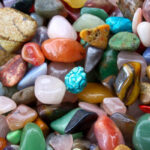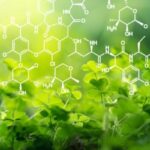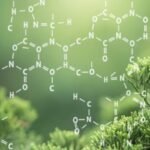We explain what inorganic chemistry is. Also, how inorganic compounds are classified and some examples.

What is inorganic chemistry?
Inorganic chemistry is the branch of chemistry that focuses its study on the formation, composition, classification and chemical reactions of inorganic compounds that is, those in which carbon-hydrogen bonds do not predominate (typical of organic chemistry).
The distinction between organic chemistry and inorganic chemistry is not always as visible as it seems, and often the two areas of study overlap or share their field of knowledge, as occurs in organometallic chemistry (studies chemical compounds that have at least one bond between a carbon atom belonging to an organic compound and a metal atom).
Initially it was thought that the difference between both disciplines had to do with a certain “vital impulse” of organic chemistry, since it is what is used to explain the emergence of life, but that hypothesis has been discarded as this has become clear. has been understanding better.
On the other hand, in the past, substances composed of carbon that were extracted from plants and animals were classified as “organic”. While at Substances extracted from stones and minerals were called “inorganic”. Currently, with scientific and technological advances it is possible to synthesize organic substances in chemical laboratories, for example, fullerene and graphene.
Inorganic chemistry is widely used in geology, mineralogy, magnetochemistry, geochemistry and other similar fields of application.
See also: Acetic acid
Classification of inorganic compounds

Inorganic compounds can be classified according to the number of elements involved in the formation of each of them:
- Binary compounds They are those that are made up of only two chemical elements, such as:
- Oxides. They are compounds formed by the union of oxygen (O2) with some metallic (basic oxides) or non-metallic (acidic oxides) element from the Periodic Table. The properties of the oxides are very diverse, and they can be found in the three states of aggregation. For example, some are gases, such as carbon dioxide (CO2), and others are solid, such as magnesium oxide (MgO).
- Peroxides Peroxides are formed by the union of the peroxide group (O22-) with a metal element. In these compounds oxygen has oxidation number -1. They can be flammable and cause explosions.
- Hydrides They can be metallic and non-metallic. Metal hydrides are formed by the union of a hydride anion (H–) of negative electrical charge, with any metal cation (positive charge). Non-metal hydrides are formed by the union of a non-metal (which in this case always reacts with its lowest oxidation state), and hydrogen. In the case of metal hydrides, they can present metallic properties such as good electrical conductivity. They can be thermally unstable and cause explosions.
- Hydracids or binary acids. They are binary acids composed of hydrogen and a nonmetal other than oxygen. Acids have a characteristic odor and sour or bitter taste. Their pH is less than 7. They are also good conductors of electricity when in aqueous solution.
- Binary salts They are compounds formed by sets of electrically charged atoms, whether cations (+) or anions (-). These salts are made up of two types of atoms. At room temperature they are crystalline solids with a high melting and boiling temperature. They are good conductors of electric current in aqueous solution.
- Ternary compounds . They are those in which three chemical elements are involved. Such as:
- Hydroxides They are compounds resulting from the union of a metallic element with a hydroxyl group (OH–). They are commonly called “bases” or “alkalis.” At room temperature they are solid and generally corrosive. They react with acids to produce salts.
- Oxacids. They are acidic compounds that are formed by the reaction between an anhydride (a non-metallic oxide) and water. Its formula always depends on a HaAbOc pattern, where A is a transition metal or a non-metal, and a, b, and c are the subscripts that indicate the quantity of each atom. These compounds have acidic properties, their pH is less than 7.
- Ternary salts. They are compounds formed by sets of electrically charged atoms, whether cations (+) or anions (-). These salts are made up of only three types of atoms. Its properties are equivalent to those of binary salts.
Examples of inorganic compounds

Some common examples of the compounds detailed above are:
- Binary acids or hydracids Hydrofluoric acid (HF(ac)), hydrochloric acid (HCl(ac)).
- Oxacids. Sulfuric acid (H2SW4), carbonic acid (H2CO3), sulfurous acid (H2SW3).
- Metal hydrides. Lithium hydride (LiH), beryllium hydride (BeH2).
- Non-metallic hydrides Hydrogen fluoride (HF(g)), hydrogen chloride (HCl(g)).
- Bases Sodium hydroxide (caustic soda) (NaOH), magnesium hydroxide (milk of magnesia) (Mg(OH)2), sodium hypochlorite (pool bleach and bleach) (NaClO), sodium bicarbonate (NaHCO3).
- Metal oxides Cuprous oxide or copper (I) oxide (Cu2O), cupric oxide or copper(II) oxide (CuO), ferrous oxide or iron(II) oxide (FeO), sodium oxide (Na2EITHER).
- Non-metallic oxides Carbon dioxide (CO2), carbon monoxide (CO), sulfur dioxide or sulfur dioxide (SO2), dibromo monoxide or bromine(I) oxide (Br2EITHER).
- Binary salts Sodium chloride (NaCl), potassium bromide (KBr), iron trichloride or iron(III) chloride (FeCl3)
- Ternary salts. Sodium nitrate (NaNO3) , calcium phosphate (Ca3(P.O.4)2), sodium sulfate (Na2SW4).
References
- “Inorganic chemistry” in Wikipedia, The Free Encyclopedia.
- “What inorganic chemistry studies” in What it studies.





